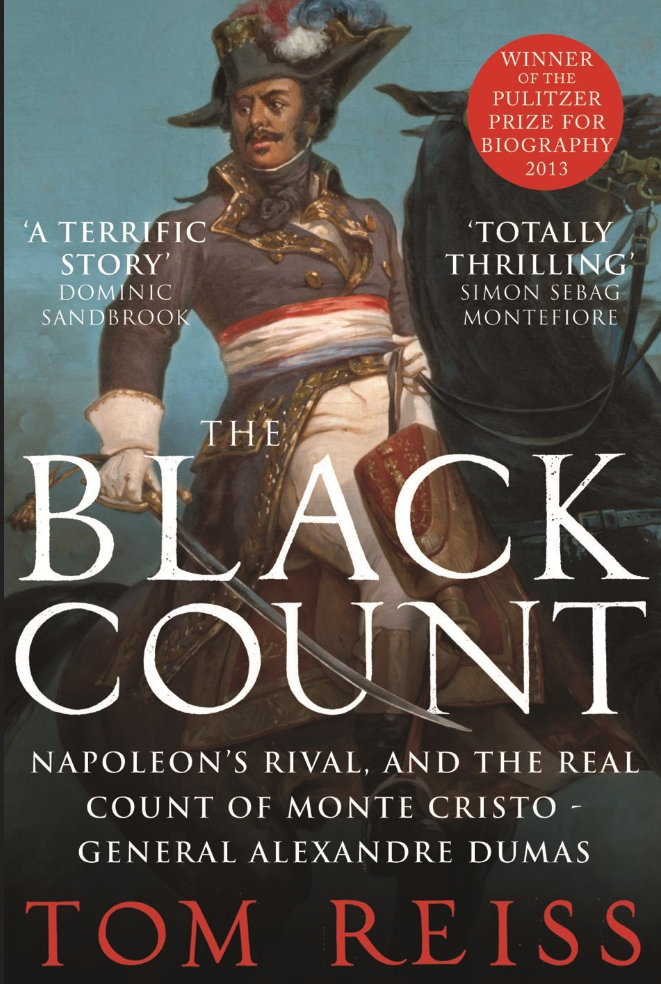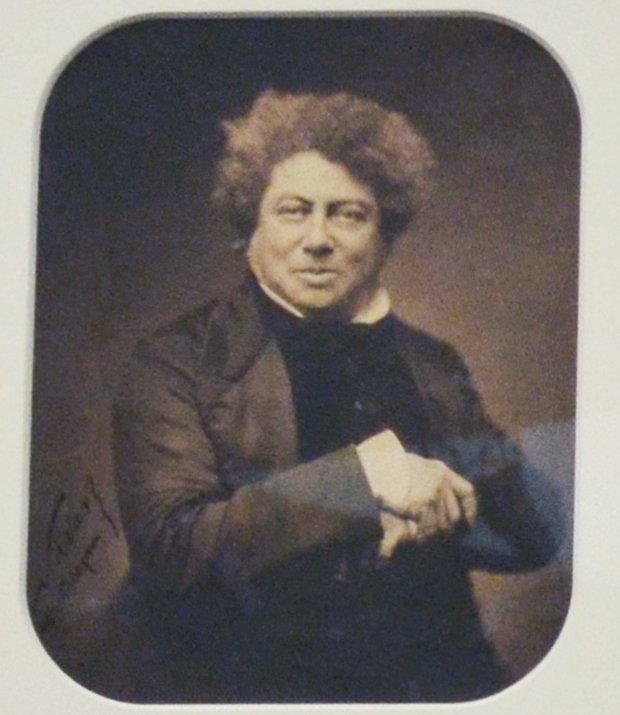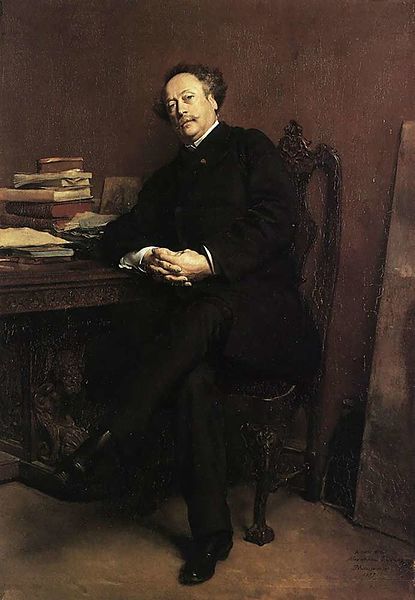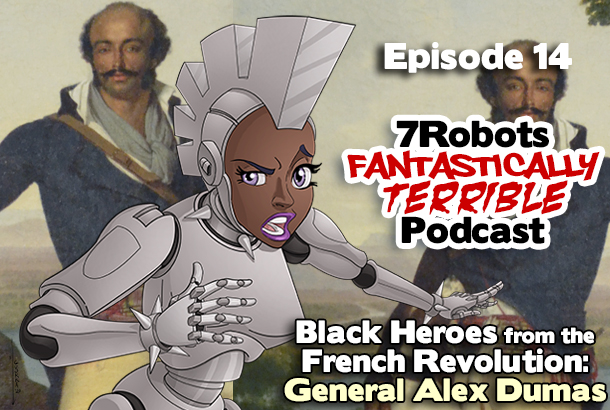Black history in France
Miguel and I went to the Le Modèle Noir: From Géricault to Matisse exhibit at the Musée d’Orsay in Paris, running from 26 March – 21 July 2019. Our expectations were high and we were not disappointed! It’s a massively impressive collection featuring black models in the 19th and 20th centuries. It was also a thrill for me to see all three of the Dumas men in one place. To read more about my previous post The Black Model / Le modèle noir Exhibition in Paris, click here.
Three Generations of Greatness
Alexandre Dumas wrote many classics like The Three Musketeers (1844), The Count of Monte Cristo (1844 serialised), The Black Tulip, Georges and even published Le Vampire in 1851. For comparison’s sake, Bram Stoker’s Dracula was published in 1897 (46 years before!).
Most people don’t know that Alexandre Dumas based his most heroic and tragic characters on his father – Thomas Alexandre Dumas (aka Alex Dumas). Alex Dumas was a four star general during the French Revolution, equal to Napoleon, the son of a Haitian slave and a French aristocrat. General Alex Dumas lived an extraordinary and tragic life which inspired his son’s larger than life heroes and heart-pounding adventures.
Inspiring Life of General Alex Dumas
The following excerpt is from the prologue of an incredible book that I highly recommend called, “The Black Count: Napoleon’s Rival, and the Real Count of Monte Cristo – General Alexandre Dumas” by Tom Reiss, who won the Pulitzer Prize for Biography in 2013. [click here for Amazon.com]
Alex Dumas I
“The original Alexandre Dumas was born in 1762, the son of Antoine Alexandre de l’Isle, in the French sugar colony of Saint-Domingue [modern day Haiti]. Antoine was a nobleman in hiding from his family and from the law, and he fathered the boy with a black slave [Marie Cessette Dumas]. Later Antoine would discard his alias and reclaim his real name and title – Alexandre Antoine Davy, the Marquis de la Pailleterie – and bring his black son across the ocean to live in pomp and luxury near Paris. But the boy would reject his father’s name, along with his noble title. He would enlist in the French army at the lowest rank, taking the surname “Dumas” from his mother for his enlistment papers. Once he’d risen by his merits to higher rank he would not even sign his name “Alexandre,” preferring the blunt and simple form “Alex Dumas”.

Alex Dumas was a consummate warrior and a man of great conviction and moral courage. He was renowned for his strength, his swordsmanship, his bravery, and his knack for pulling victory out of the toughest situations…He was a soldier’s general, feared by his enemy and loved by his men, a hero in a world that did not use the term lightly.
Inspiration for the Count of Monte Cristo
But then, by the wiles of conspiracy, he found himself imprisoned in a fortress and poisoned by unknown enemies, without hope of appeal and forgotten by the world. It was no accident that his fate sounds like that of a young sailor named Edmond Dantès, about to embark on a promising career and marry the woman he loves, who finds himself a pawn in a plot he never imagined, locked away without witnesses or trial in the dungeon of an island fortress called the Château d’If. But unlike the hero of his son’s novel The Count of Monte Cristo, Alex Dumas met no benefactor in the dungeon to lead him to escape or to a hidden treasure. He never learned the reason for his trials, for his abrupt descent from glory to suffering. I had come to Villers-Cotterêts to to find the truth of what befell this most passionate defender of “liberty, equality, and fraternity.”…

Brilliant General
Alex Dumas first came to the army’s attention when, still a lowly corporal, he single-handedly captured twelve enemy soldiers and marched them back to his camp. Not long afterward, he led four horsemen in an attack on an enemy post manned by over fifty men – Dumas alone killed six and took sixteen prisoner. As a Parisian society journalist in the early nineteenth century summed up, “Such brilliant conduct, on top of manly physiognomy and extraordinary strength and stature, secured his quick promotion; it wasn’t long before his talents proved he deserved it…
As general-in-chief of the Army of the Alps, roughly equivalent to a four-star general today, Dumas put on spiked boots and led his men up seemingly impregnable ice cliffs at night to surprise an Austrian battery that seemed unassailable as the guns of Navarone. He captured the enemy’s material and turned their own guns against them, forcing immediate surrender. He took not only 1,700 prisoners and over forty artillery pieces but Mont Cenis, the key to the Alps….[a great strategic victory for France].
Ideological Clash between Dumas and Napoleon
When they were still both generals in the French Revolution, Napoleon celebrated Alex Dumas’ deeds in the classical terms favored at the time, proclaiming him the incarnation of Horatius Cocles, the ancient hero who saved the Roman Republic by keeping invading barbarians from crossing the Tiber.
When Napoleon launched the French invasion of Egypt, Dumas went as his cavalry commander, but it was there that the two very different soldiers came to loathe each other. The clash was ideological – Dumas saw himself as a fighter for world liberation, not world domination – but it was also personal [for Napoleon].
Among the Muslims, men from every class who were able to catch sight of General Bonaparte were struck by how short and skinny he was,” wrote the chief medial officer of the expedition. “The one, among our generals, whose appearance struck them more was…the General-in-Chief of the cavalry, Dumas. A man of color, and by his figure looking like a centaur, when they saw him ride his horse over the trenches, going to ransom prisoners, all of them believed that he was the leader of the expedition.”
To read more, please pick up a copy of “The Black Count: Napoleon’s Rival, and the Real Count of Monte Cristo – General Alexandre Dumas” by Tom Reiss
Alex Dumas & the Age of Emancipation in France
The story of General Dumas is a shining example of the first true age of emancipation, albeit short. For one decade during which the French Revolution, these idealists ended slavery in 1794 and offered Jews full civil and political rights. They introduced the world to the ideas of human freedom and equality, regardless of color or religion.
Dumas rank of four-star General and command of entire armies would not be matched by another black officer in the western world for 150 years! [U.S. General Colin Powell]
Napoleon Reinstates Slavery
But as we’ve learned from history, the ideals of the French Revolution soon turned to blood. After the Reign of Terror ended and Napoleon crowned himself Emperor, there was no room for Liberté, Égalité, Fraternité. In 1802 Napoleon passed the “Law of 20 May 1802” which revoked the “Law of 16 Pluviôse” (1794) that had abolished slavery in all French held territory.
Historical note: The Haitian Revolution
In 1799 Toussaint L’Ouverture, referred to as the Black Spartacus, along with other brave self-liberated slaves from the sugar plantations took the island of Saint-Domingue in a hard fought revolution and was reborn as Haiti. One can say that L’Ouverture and the Haitian patriots remained loyal to the ideals of the French Revolution.
Alexandre Dumas II
Alexandre Dumas, known in France as Alexandre Dumas père, was “the legendary writer of historical and adventure novels is one of the most widely read French authors of all time. Born as Dumas Davy de la Pailleterie, the prolific author began his career as a playwright producing several successful plays before moving on to write novels. He has also written several essays, articles and travel books.” [read more…]
“No figure in this century has exceeded the popularity of Alexandre Dumas. His successes were not merely successes, he made them triumphs ; they had the brilliance of the brass band about them…” Victor Hugo [read more…]
Although it came rather late, in 2002 President Jacques Chirac had a ceremony filled with the utmost pomp and circumstance to inter Alexandre Dumas’ body in the Panthéon of Paris. Dumas now shares his final resting place with France’s most distinguished French citizens such as Voltaire, Rousseau, Victor Hugo, Émile Zola, Jean Moulin and Marie Curie. Watch parts of the ceremony here…
Fighting Racism
The following excerpt is also taken from the prologue of, “The Black Count: Napoleon’s Rival, and the Real Count of Monte Cristo – General Alexandre Dumas” by Tom Reiss [click here for Amazon.com]
“The writer Dumas grew up in a very different world from that of his father – a world of rising, rather than diminishing, racism. His fellow novelist [Honoré de] Balzac referred to him as “that negro.” After the success of The Three Musketeers and The Count of Monte Cristo, critics launched an endless, damaging public attack on Dumas, mocking his African heritage. He was a black-skinned tropical weed in the literary soil of France…
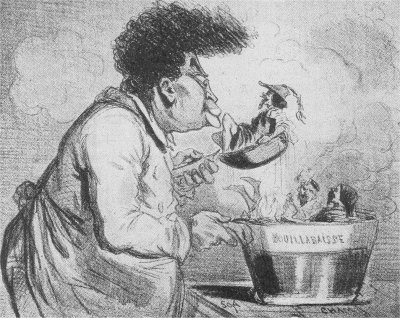
Newspaper artists in the 1850s depicted the novelist with a succession of racist clichés, mocking his literary efforts….
The novelist tried to make light of the racist insults, but they must have stung. The greatest sin of all, however, was that his father, General Alex Dumas, was forgotten. The son never managed to discover the full truth about his father,…but he avenged his father in another way, but creating fictional worlds where no wrongdoer goes unpunished and the good people are watched over and protected by fearless, almost superhuman heroes – heroes, that is, a lot like Alex Dumas.”
From Wikipedia:
His response to a man who insulted him about his African ancestry has become famous. Dumas said:
“My father was a mulatto, my grandfather was a Negro, and my great-grandfather a monkey. You see, Sir, my family starts where yours ends.” [read more…]
Alexandre Dumas III
And let’s not forget Alex Dumas’ grandson, Alexandre Dumas fils or junior, as he’s known in France. He was one of the most celebrated playwrights in the second half of the nineteenth century. He’s best known for the novel La Dame aux Camélias (known in English as Camille) which was published in 1848 and adapted into Giuseppe Verdi’s famous opera La traviata. [click here to read more]
Upon his death, Victor Hugo, a friend and fierce competitor of Alexandre Dumas (père), wrote a beautiful and touching letter of condolence to Dumas (fils), another fellow literary giant. [read more…]
Podcasts featuring General Alex Dumas & his son Alexandre Dumas
For more information on these extraordinary people and lots of links for more research, click on the following podcasts:
Related Links:
• The Black Model / Le modèle noir Exhibition in Paris
• Charles Cordier and the Beauty of Black and Brown
• Black Models of Jean-Baptiste Carpeaux and Herbert Ward
• Crochet Musketeer d’Artagnan
• Victor Hugo, the Man, the Rival
• “Musketeers” author’s coffin arrives at the Pantheon
